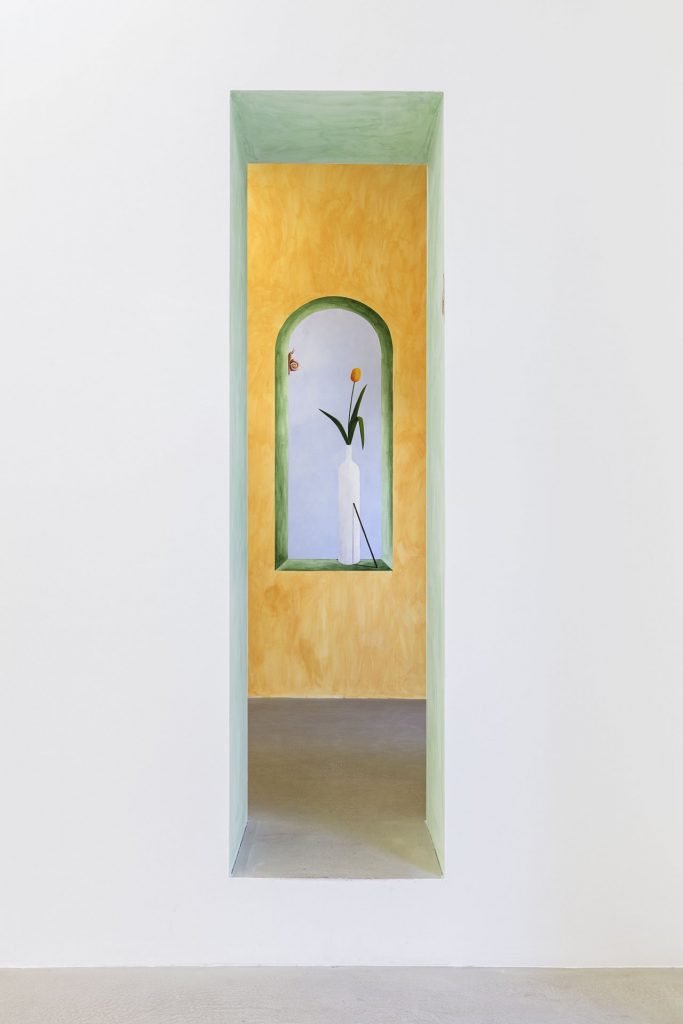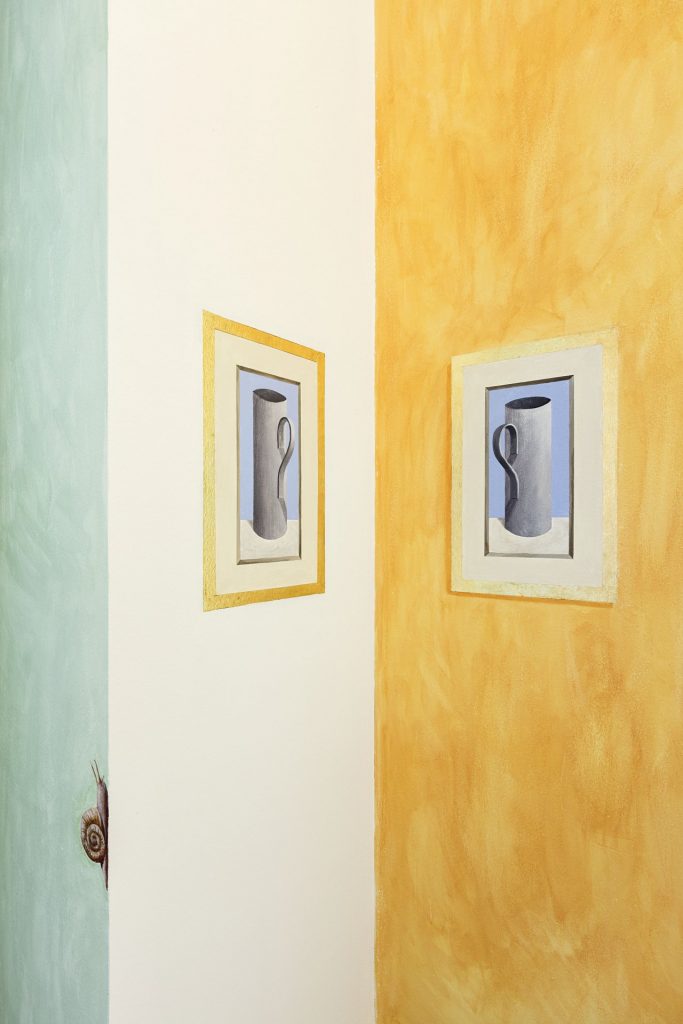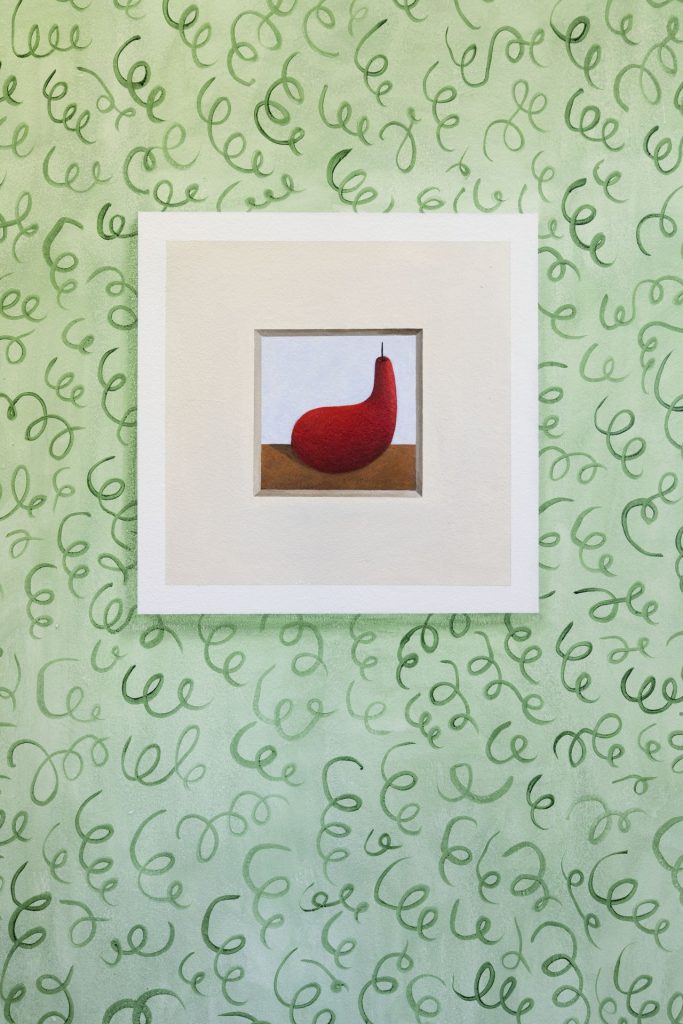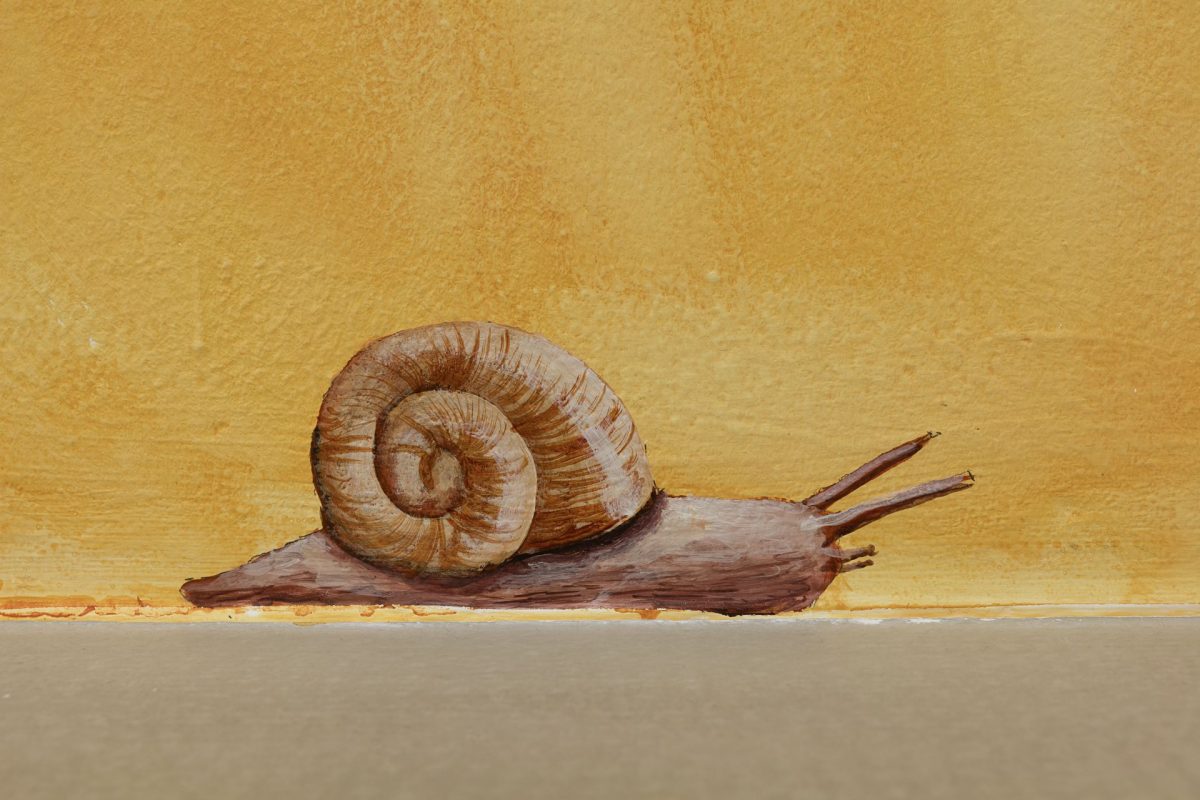
- This event has passed.
For Snails’ Chapel, Nicolas Party has transformed the project room of the gallery into a frescoed chapel, creating a site specific mural that responds to the intimate architecture of the room.
Through applying colour to a variety of surfaces – paper, canvas, walls and objects – Nicolas Party’s work explores the inherent possibilities of paint as a medium, both creatively and conceptually. Painting still lifes and landscapes from imagination, Party incorporates a vocabulary of recurring figurative elements – pots, food, mountains and trees – which are appropriated from the history of art and design and reimagined by the artist in a critical, playful way. Not merely a quotation, this process of appropriation aims to subvert the established paradigms of art history, often employing and mixing different aesthetic registers.
The title of the work, Snails’ Chapel, refers to a painting by an early-Renaissance painter of the School of Ferrara, Francesco del Cossa. In his Annunciation dated 1467, a disproportionate snail is depicted on the lower edge of the painting, as a boundary between the illusory space of the art work and the real space from which the viewer observes it. Similarly, the interiors of Party’s chapel are marked with numerous snails, crawling around the the elements inhabiting the space: fruits, bottles, sticks and pots. The room’s windows seem not to open out to the world, but onto a symbolized and slighlty exaggerated representation of reality. Rather than a solemn, richly decorated temple, Nicholas Party’s chapel resembles a naive and clumsy environment, something in between a rural church and an italian restaurant.
Per Snails’ Chapel, Nicolas Party ha trasformato la project room della galleria in una cappella affrescata, creando un ambiente che risponde direttamente all’architettura intima della stanza.
Utilizzando diverse tecniche pittoriche sulle superfici più disparate – carta, tela, muri e oggetti – il lavoro di Nicolas Party esplora le possibilità inerenti alla pittura come medium, sia a livello creativo che concettuale. I suoi ritratti, le nature morte e i paesaggi immaginari sono punteggiati da un vocabolario di elementi figurativi ricorrenti – vasi, cibo, montagne e alberi – mutuati dalla storia dell’arte e reimmaginati dall’artista in maniera critica e irriverente. Più che una semplice citazione, questo processo di appropriazione mira a sovvertire i canoni della storia dell’arte, impiegando e mescolando diversi registri estetici.
Il titolo Snails’ Chapel fa riferimento ad un’opera di Francesco del Cossa. Nella sua Annunciazione, datata 1467, una lumaca dalle proporzioni irreali è raffigurata sul margine inferiore del quadro, come a segnare il confine tra lo spazio illusorio dell’opera d’arte e quello reale da cui lo spettatore osserva.
Allo stesso modo, l’interno della cappella di Nicolas Party è invaso da una moltitudine di lumache che strisciano sui muri e sugli altri elementi che lo popolano: frutta, bottiglie, bastoni e vasi. Tutta la stanza è una rappresentazione simbolica e lievemente esagerata del mondo esterno. Più che un tempio riccamente decorato, essa ricorda un ambiente goffo e naive, a metà strada tra una chiesetta di campagna e un ristorante nostrano.







